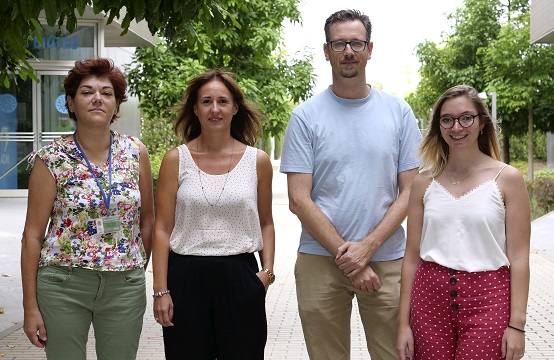
- This study opens the door to the potential design of new pharmaceutical or cosmetic treatments against oxidative stress. It has been carried out by the Institute of Integrative Systems Biology (UV-CSIC), the Institute of Agrochemistry and Food Technology (CSIC) and the companies Darwin Bioprospecting Excellence and ADM Biopolis, all located in the Science Park of the University of Valencia.
The discovery of new antioxidants extracted from natural sources, such as now plants and microorganisms, awakens great interest in the pharmaceutical and food industry in order to combat oxidative stress associated with various diseases, including Alzheimer's, hypertension and cancer. Along these lines, research carried out within the University of Valencia Science Park, where the scientific knowledge and technologies of various research institutes and innovative companies have collaborated, points to some strains of the bacterial communities that grow on solar panels as potential antioxidants and protectors against ultraviolet radiation.
"The general objective was to increase knowledge about the bacterial communities that live on artificial surfaces under extreme conditions, in such a way that we can understand the molecular mechanisms that make their survival possible and apply this knowledge to develop biotechnological applications", explains Manel Porcar, principal investigator of the HELIOS project, of the Institute for Integrative Systems Biology (I2SysBio, UV-CSIC), and president of Darwin Bioprospecting Excellence.
"We start from the idea that bacteria that grow in environments with high solar radiation and desiccation have different strategies to combat the extreme conditions to which they are exposed. These adaptations include efficient DNA repair systems, pigment production and protection against oxidative stress," adds Kristie Tanner, R&D project coordinator at Darwin Bioprospecting Excellence. "For this reason, we decided to study the microbial communities that live on the surfaces of 6 solar panels located in the Faculty of Economics at the University of Valencia.
In the study, the use of the nematode Caenorhabditis elegans as an animal model of evaluation was key to rapid in vivo scrutiny of the biological activity of the candidate bacteria. "It has been used in research for more than 40 years, being one of the best described animals in biology. In ADM Biopolis this nematode allows us to evaluate the functionality of different ingredients, such as plant extracts, probiotics or even drugs," says Patricia Martorell, head of Cell Biology Laboratory of biotechnology.
In this case, in order to evaluate a high number of samples, an innovative automated system available at ADM Biopolis was used, which allows biological measurements to be carried out simultaneously with a high number of samples. These assays showed that three of the microorganisms in the study had greater antioxidant power than vitamin C. These are Planomicrobium sp., Rhodobacter sp. and Bacillus sp. In addition, the C. elegans model was also used to confirm the protective effect of microorganisms against ultraviolet radiation, especially the first two.
"We were struck by the fact that these bacteria present a red, orange or yellow pigmentation, which is linked to the production of carotenoids. It is demonstrated, therefore, once again, that these natural pigments can play an important role in protecting against harmful ionizing radiation and oxidative stress," say researchers from the Institute of Agrochemistry and Food Technology (IATA, CSIC) Lorenzo Zacarias and Maria Jesus Rodrigo, specialists in the study of carotenoids.
In conclusion, the research team points out that the elaboration of extracts of these selected bacteria or artificial combinations of their active components could be useful for the design of new treatments against diseases where oxidative stress plays a crucial role. The research has been published in the scientific journal Frontiers in Microbiology.
The origin of this research was the MICROBIOSOL project ('Bioprospection, scrutiny and identification of microorganisms and metabolites of biotechnological interest in solar panels'), carried out by ADM Biopolis with the participation of I2SysBio and funded by the Valencian Institute of Business Competitiveness. This led to the HELIOS project, promoted by I2SysBio with funding from FEDER Funds and the Ministry of Economy and Competitiveness.

